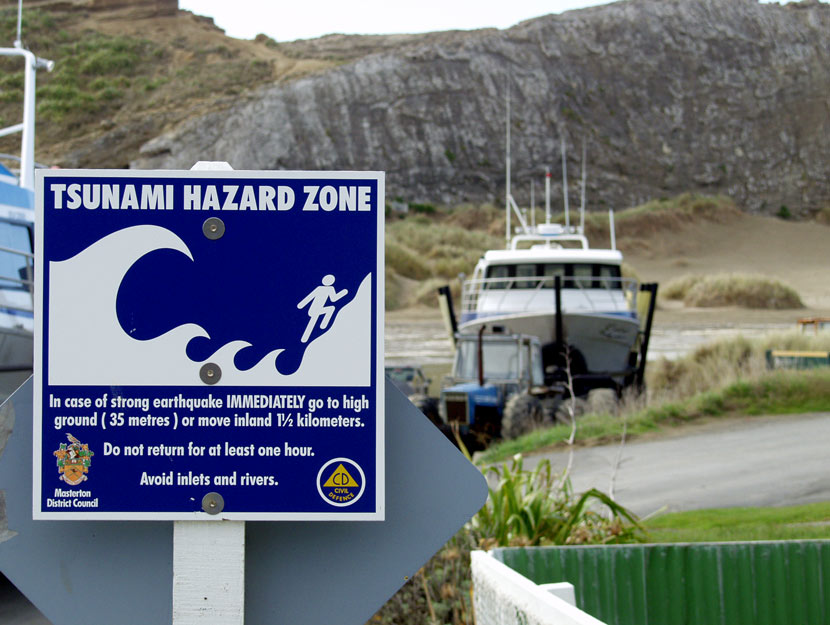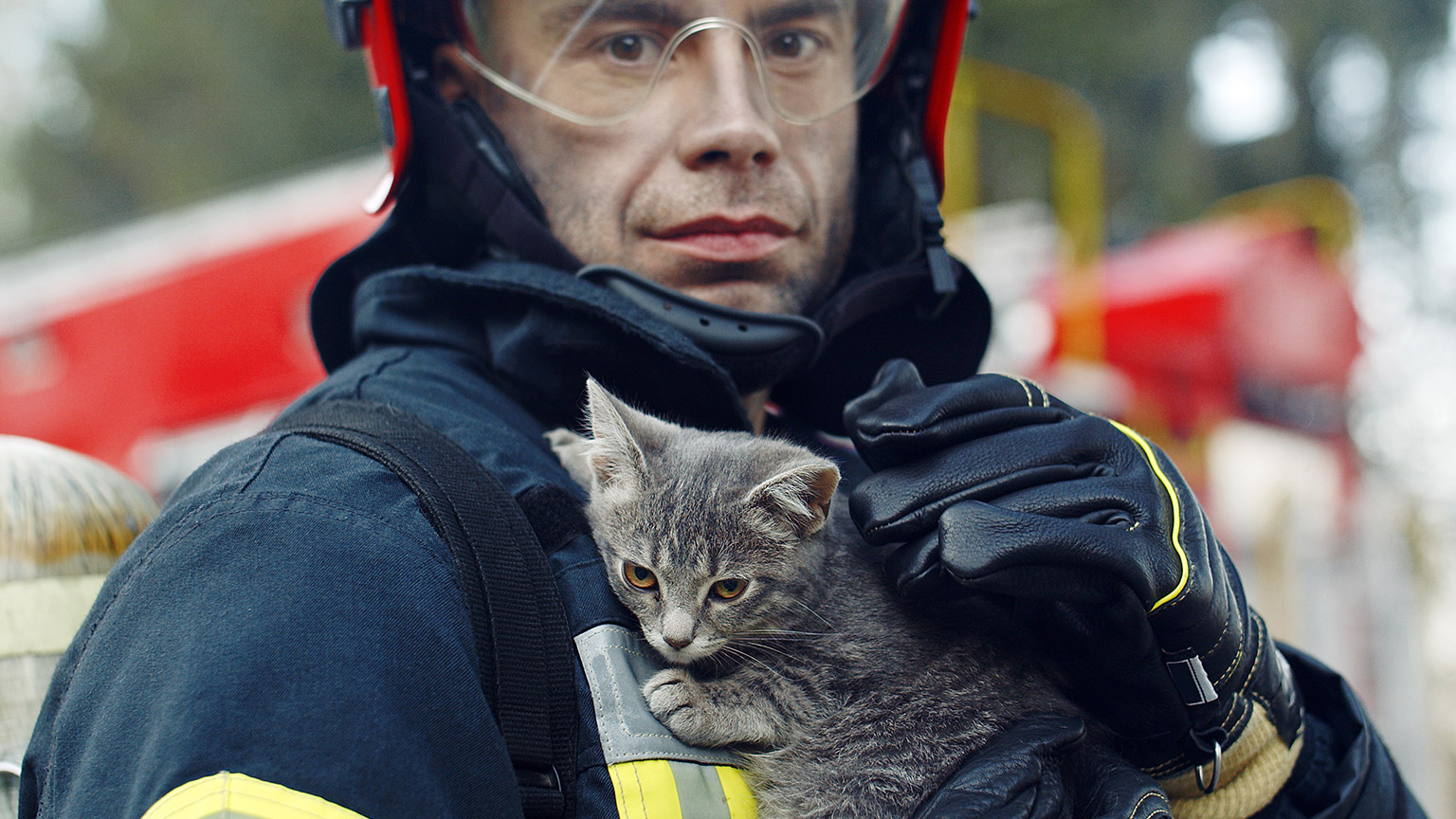Whether you are a paid employee or volunteer, as part of your workplace induction your employer is responsible for covering the plans and procedures for dealing with emergencies. PCBU procedures will not be very different from the advice given by Fire and Emergency, the Police, relevant government agencies or Civil Defence, but may include site specific information. Emergency plans will match the type of work and workplace.
Workplace emergency plans must include procedures on the following:
- effective responses to emergencies
- evacuation procedures
- procedures for notifying emergency services at the earliest opportunity
- medical treatment and assistance
- plans for testing the emergency procedures
- information, training, and instruction for workers
- a detailed floor plan showing where emergency equipment and first aid supplies can be found, and the location of utilities.
All workers should know who is responsible for activating and coordinating emergency procedures and what they must do to keep themselves and others safe in an emergency.Source: Workplace emergency plans | WorkSafe
Fires
It is your responsibility to follow the PCBU procedure when there is a fire or the threat of a fire.
Your workplace will have an evacuation procedure that covers:
- Official evacuation routes and assembly points that have been approved by Fire and Emergency New Zealand
- Clearly marked emergency exits
- Fire detection, alarms and suppression systems
- Smoke control and firestop doors
Your workplace may also have (depending on the type of workplace):
- Fire wardens
- Fire extinguishers and staff who are trained to use them
- Monitored fire alarms
If you are the first person to spot a fire at work, then activate your nearest fire alarm immediately and call 111.
If you see smoke or fire and believe there's a risk to people or property, call 111 and ask for 'Fire' immediately. If you're not sure whether it's a real emergency or not, call 111 and ask. When in doubt, call 111.What to do if you see a fire | Fire and Emergency New Zealand
Have you thought about putting your hand up to become a fire warden at work? This is a really important volunteer role and a great way to contribute to your workplace. You will receive training on how to carry out the fire warden duties and it’s a great addition to your CV as well. If you are interested, let your manager know. Aroha is a fire warden at work, let’s see what this looks like in the following case study.
Case Study
The Fire Drill
Aroha is behind the counter when the fire alarm goes off in the shop. As soon as she hears it, she puts on the Hi-Viz fire warden jacket located under the counter because she is one of the nominated fire wardens. The building fire evacuation procedure states that all staff and customers must stop what they are doing and immediately walk towards the nearest exit. She leaves her backpack behind because of this – bags, laptops, purses, wallets and other loose personal items could become hazards in an evacuation if they drop or catch on something.
She approaches customers in the store and directs them to the closest emergency exit. She also makes sure that other staff leave the building at the same time. It’s part of her role as fire warden to check the dog wash area, toilet, stock room and staffroom to make sure that the building is clear. She closes fire doors behind her. Once she is sure that all people and animals have safely left the shop, she also leaves by the nearest emergency exit.
The assembly area that has been approved by Fire and Emergency New Zealand is on the pavement outside of the business next door to the shop. Aroha makes sure that everyone is standing where they are safe and not in the way of emergency service vehicles. She does a roll call of the other staff and checks with customers to see if everyone is accounted for and stands where her warden jacket can be clearly seen.
Activity
If you are working, locate your company’s fire evacuation policy and re-familiarise yourself with it. Make sure that you know where all of the fire exits, and assembly points are.
If you are not involved with a workplace, then make an evacuation plan for your household. Think about the different areas of your house – where would you be able to exit from if there was a fire in that part of the building? Install smoke alarms if you don’t have them, and check the alarms are working if you have already installed them. Buying a small fire extinguisher might also be something for you and your household to think about if you don't have one already. If you do have one, when was the last time you checked it to make sure it has not expired?
Evacuations and Civil Defence Emergencies
Natural hazards in New Zealand that could happen while you are at work include:
- Earthquakes
- Tsunamis
- Flooding
- Volcanic eruption
- High winds or tornados
- Extreme weather events
Your workplace needs to have a procedure in place to keep people safe in the unlikely event of one of these emergencies. It will be based on the advice given by the New Zealand Government, usually via Civil Defence.
Earthquakes
It doesn’t matter where you are in New Zealand – earthquakes are a risk. ‘Drop, cover, and hold’ is a simple and effective phrase for you to remember in an earthquake.
Watch: Remember: Drop, Cover, Hold (0:15 seconds)
This video demonstrates what to do when an earthquake happens.
Earthquakes — Get Ready — Emergency preparedness in New Zealand
Earthquakes happen nearly every day in New Zealand and most of the time they are small and barely noticeable. After a small earthquake you may be able to return to your workplace duties. In some instances the owner of the building where your workplace is based may require you to evacuate the building so that a safety inspection can be carried out. You will be sent home in this kind of situation.
Read more about what to do in an earthquake here: Drop, Cover, Hold - Factsheet - English - April 2015 (getready.govt.nz)
What to do after an earthquake
Expect more shaking. Each time you feel earthquake shaking, Drop, Cover and Hold. More shaking can happen minutes, days, weeks, months and even years following an earthquake.
- Check yourself for injuries and get first aid if necessary.
- Do not run outside. It is frightening to stay in a building immediately after an earthquake, but it is much safer than going outside. An earthquake is not like a fire. You do not have to evacuate a building straight away unless it is showing obvious signs of distress, or you are in a tsunami evacuation zone.
- Turn off water, electricity and gas if advised to. If you smell gas or hear a blowing or hissing noise, open a window, get everyone out quickly and turn off the gas if you can.
- If you see sparks, broken wires or evidence of electrical system damage, turn off the electricity at the main fuse box if it is safe to do so.
- If you can, put on protective clothing that covers your arms and legs, and sturdy footwear. This is to protect yourself from injury by broken objects.
- If you are in a store, unfamiliar commercial building or on public transport, follow the instructions of those in charge.
- Use social media or text messages instead of calling to keep phone lines clear for emergency calls.
- Keep control of your pets. Protect them from hazards and protect other people from your animals.
- Check on your neighbours and anyone who might need your help.
Source: Earthquakes — Get Ready — Emergency preparedness in New Zealand
Activity
Find out if your workplace has a specific policy to keep employees safe if an earthquake happens and familiarise yourself with it. New Zealand ShakeOut drills also happen on a regular basis. Find out more here: New Zealand ShakeOut — Get Ready — Emergency preparedness in New Zealand
Tsunami
If you work in a coastal or low-lying area of New Zealand, then there may be risk of a tsunami following an earthquake. It could arrive in minutes of the earthquake happening. You will need to act quickly to remove yourself from danger or harm. Areas at risk during a tsunami are sign-posted in New Zealand.

You should take note of the nearest area of high ground and how to get there. Ask your workplace if they have included this as part of the emergency plan.
‘Long and strong, get gone’ is a simple and effective phrase for you to remember if you find yourself in a strong earthquake.
Watch: Tsunami evacuation: Long or Strong, Get Gone (0:30 seconds)
This video demonstrates what to do when a strong earthquake happens.
You don’t need to wait for an official tsunami warning, or for your manager to tell you what to do: when there is risk of a tsunami take action and leave the area immediately. Civil Defence will provide the all-clear when the threat has passed.
Know the natural warning signs and take action
For a local source tsunami, which could arrive in minutes, there won’t be time for an official warning. It is important to recognise the natural warning signs and act quickly.
Drop, Cover and Hold if there is earthquake shaking. As soon as the shaking stops, move immediately to the nearest high ground or as far inland as you can out of tsunami evacuation zones. Even if you can't get out of your evacuation zone, go as far or as high as you can. Every metre makes a difference.
If you are near a shore and experience any of the following, take action. Do not wait for official warnings.
- Feel a strong earthquake that makes it hard to stand or a long earthquake that lasts more than a minute
- See a sudden rise or fall in sea level
- Hear loud or unusual noises from the sea
Remember, Long or Strong, Get Gone.
Walk, run or cycle, if at all possible, to reduce the chances of getting stuck in traffic congestion.
Take your animals with you only if it will not delay you. Do not spend time looking for them and if you are not at home, do not return to get them.
While evacuating, avoid hazards caused by earthquake damage, especially fallen power lines.
Do not return until you get an official all-clear message from Civil Defence.
Source: Tsunami — Get Ready — Emergency preparedness in New Zealand
Activity
Find out if your workplace is in a tsunami risk zone. Does your company have a policy for managing the risk? If it does, familiarise yourself with it.
If you are not involved with a workplace, check the risk for where you live and plan an escape route for your household.
Bomb threats, armed hold ups
Although very unlikely, the company you work for may be at risk for either a bomb threat or an armed hold-up. Organisations that work with animals could be targeted by groups or individuals who have political or ideological views about animals that lead them to make threats to others. If the company that you work for has a retail component and keeps cash and valuables onsite, then an armed hold-up may also be a risk. This may have been formally identified as a risk in the company’s health and safety policy and a procedure for dealing with either scenario put in place. It is a good idea for you to check if this is the case so that you know what to do if either of these situations happen while you are at work.
Chemical Spills
Depending on the area of the animal care industry you are involved with, chemical spills could be a risk. The HSWA Regulations 2017 requires that workplaces must have an emergency plan for dealing with hazardous substances. You can read about this via the two links below:
- Health and Safety at Work (Hazardous Substances) Regulations 2017 (LI 2017/131) (as at 24 August 2023) 5.7 Duty to prepare emergency response plan – New Zealand Legislation
- Health and Safety at Work (Hazardous Substances) Regulations 2017 (LI 2017/131) (as at 24 August 2023) 12.7 Requirements to control adverse effects of spills or failure of containers – New Zealand Legislation
In the event of a chemical spill, the safety of people is the most important thing. If you come across a spill you should raise the alarm, evacuate people and call 111 immediately.
Your employer’s emergency plan for dealing with chemical spills should be based on the advice given by the New Zealand government:
| Spill Checklist | Precautions |
|---|---|
|
|
Source: wsnz_2510-emergency-response-a4-digital-v3-0-fa-lr.pdf (hazardoussubstances.govt.nz)
Activity
If you are already employed in the animal care industry, find your employer’s emergency plan and compare it to the advice above. Do you have enough training to carry out steps 5 to 9 in the Spill Checklist?
You could also review the Safety Data Sheets (we mentioned these in Module One) for any chemicals that might be used at your workplace.
Workplace emergency plans are designed to keep humans safe, but what about the animals that we live and work with? You will be relieved to know that the New Zealand Government provides guidance and support for this. The Ministry for Primary Industries (MPI) has information on how to look after animal welfare in an emergency. The SPCA also provides guidance on emergency planning for households with pets, as do Companion Animals New Zealand, Get Ready and AnimalEvac NZ.
The National Civil Defence Emergency Management Plan Order 2015 says this:
75 Animal welfare
- All animal owners, or persons in charge of animals, should develop their own plans to care for their animals during emergencies.
- At the national and CDEM Group levels, the Ministry for Primary Industries is the agency responsible for—
- co-ordinating the provision of the animal welfare services sub-function (including animal rescue, animal shelter, food, water, husbandry, and veterinary care and other essentials) for all animals, including companion animals, production animals, animals in research, testing, and teaching facilities, zoo and circus animals, and wildlife; and
- co-ordinating the planning for animal welfare in emergencies; and
- maintaining the Government’s reporting and advisory capability on animal welfare in an emergency.
So basically, the legislation states that owners or people in charge of animals are responsible for them in the case of emergency. However, the government via MPI will provide some services to support the welfare of animals after an emergency via coordination with a variety of animal welfare agencies.
Read about how Kai approaches planning for an emergency with their mother.
Case Study
Kai’s Pet Emergency Plan

Kai: Hey mum, can I talk to you about the Pet Emergency Plan I have just made?
Kai’s Mum: Of course!
Kai: I saw something on the internet that said if you have pets you should make a plan for them in case of an emergency. We did a household plan a couple of years ago, but now I would like to add Freya and Ravenna to that plan.
Kai’s Mum: Good idea.
Kai: I’ve put their vet’s contact details on the plan already and would like to put you as the emergency contact if I am not at home.
Kai’s Mum: Ok.
Kai: I’m going to put together an emergency kit with supplies for Freya and Ravenna, but the information I read online says that I should microchip them. A pet first aid kit is also recommended.
Kai’s Mum: I see why you wanted to talk to me! Would you like some help with the cost of the microchipping and first aid kit?
Kai: You’re the best mum ever!
Activity
The advice on preparing an emergency plan for animals, whether it is for the workplace or for private households, is common sense and very similar to the advice for preparing a plan to keep humans safe in an emergency.
- Go to the websites below and find out what they recommend.
- Check what you have learned by completing the learning activity.
- Animal Welfare Emergency Management | NZ Government (mpi.govt.nz)
- Advice & welfare: Animals in emergencies • SPCA New Zealand
- ANIMALS IN EMERGENCY — Companion Animals New Zealand
- Animal Evac New Zealand – Kararehe whakawatea AND Resources – Animal Evac New Zealand
- Plan for your pets and other animals — Get Ready — Emergency preparedness in New Zealand
Activity
Choose one of the Pet Emergency Plan templates from either the SPCA, Companion Animals, Get Ready or Animal Evac websites (links above) and complete it for your companion animal/s.
If you don’t have access to a companion animal, complete one for Kai and their two rabbits Freya and Ravenna. Or you could make a plan for one of the other companion animals such as birds, mice or rats.
Progress Check
Let’s wrap up this topic by checking what we have covered so far.
So there you have it, keeping yourself and your companion animals safe in the workplace and during emergencies.
We’re going to return now to legislation that relates specifically to companion cats and dogs. Head on over to Topic 4 and hoake tātou- let's go!
